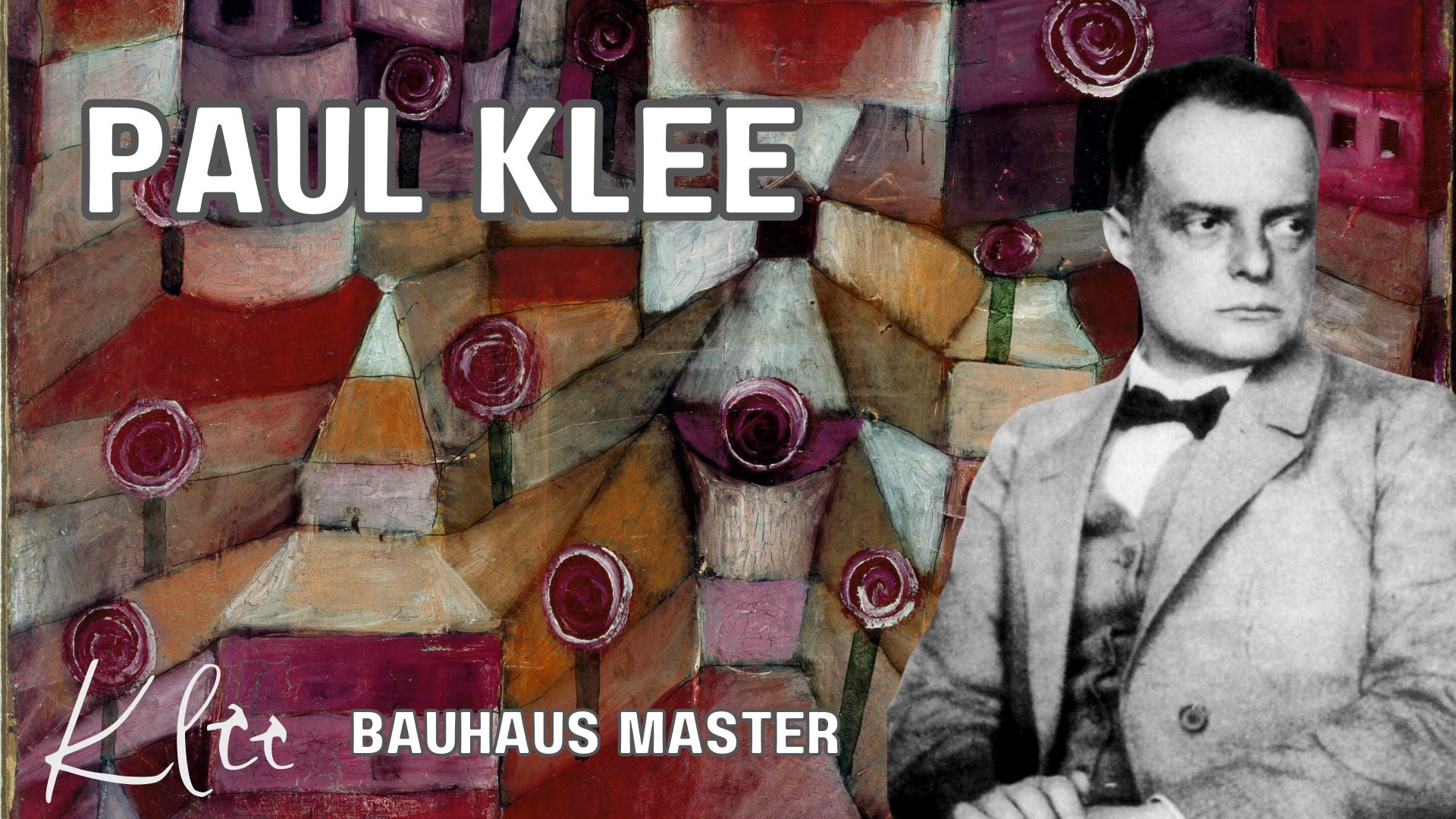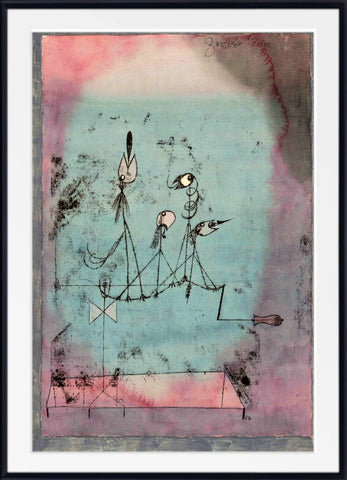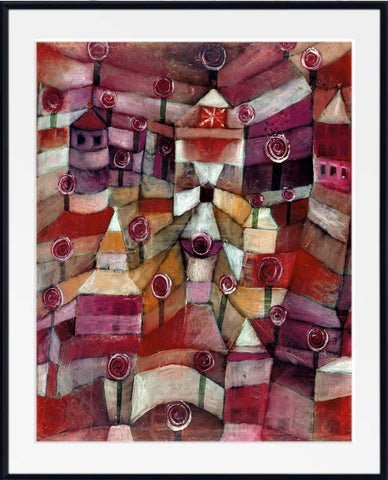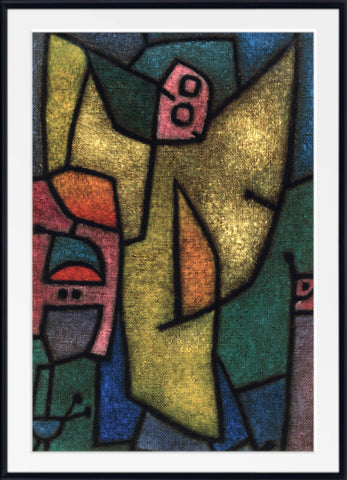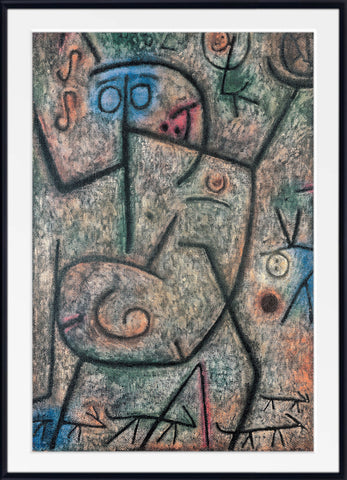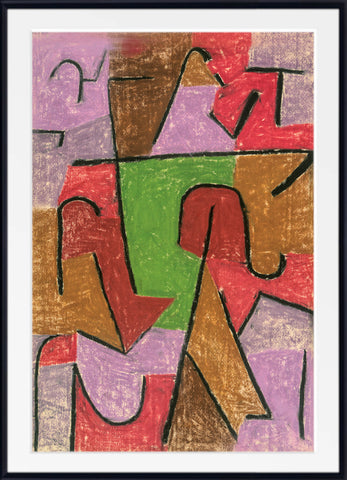Table of Contents:[hide]
Early Life and Artistic Beginnings
From a young age, Paul Klee demonstrated a natural talent for drawing and an innate creativity that would shape his future as an artist. He initially studied art at the Academy of Fine Arts in Munich, where he was exposed to various art movements and styles that would influence his own unique artistic approach.
Klee's early works were largely influenced by Impressionism and Expressionism, showcasing his ability to capture the essence of nature and convey emotions through bold brushstrokes and vibrant colors. However, it was his introduction to the avant-garde art movements of the early 20th century that truly transformed his artistic vision.
Embracing Modernism: Klee's Unique Style
Paul Klee's artistic style defied categorization, blending elements of Cubism, Surrealism, and abstraction to create visually striking and thought-provoking compositions. His works often featured whimsical subjects and dreamlike landscapes, executed with a meticulous attention to detail and an outstanding mastery of color.
A Visual Language of Symbols and Abstraction
One of Klee's most recognizable characteristics was his ability to combine seemingly disparate elements into harmonious and captivating compositions. He seamlessly merged abstract shapes, symbols, and figures, creating a visual language that was both enigmatic and deeply personal.
The Power of Color
Klee's use of color was particularly remarkable. He employed a rich palette of hues, often juxtaposing complementary colors to create a sense of vibrancy and depth. His works were characterized by a delicate balance between order and chaos, inviting viewers to explore the intricate layers and hidden meanings within each piece.
Influence and Legacy
Paul Klee's influence extended far beyond the realms of painting and drawing. His explorations in abstract art and his unique approach to color theory and composition had a profound impact on the development of modern art movements such as Surrealism and Abstract Expressionism.
Klee's works continue to captivate audiences worldwide, with his paintings and drawings featured in prestigious museums and art galleries across the globe. His legacy has inspired generations of artists, who continue to draw inspiration from his innovative techniques and his ability to convey complex ideas through deceptively simple forms.
Exploring Klee's Artistic Journey
To truly appreciate the genius of Paul Klee, it is essential to delve into the various phases and periods of his artistic journey. From his early experiments with Impressionism and Expressionism to his embrace of avant-garde movements like Cubism and Surrealism, Klee's body of work reflects a constant evolution and a relentless pursuit of artistic innovation.
The Bauhaus Years
One of Klee's most notable periods was his time as a teacher at the Bauhaus school in Germany, where he played a pivotal role in shaping the school's artistic philosophy and pedagogical approach. During this period, Klee produced some of his most iconic works, including his famous "Pedagogical Sketchbook," a collection of drawings and notes that encapsulated his unique perspectives on art education.
Later Works and Introspection
Klee's later works, created during his time in Switzerland, showcased a more introspective and contemplative approach. Influenced by his personal experiences and the tumultuous events of the early 20th century, these pieces often explored themes of isolation, existentialism, and the human condition.
Beyond the Canvas: Klee's Influence on Art and Culture
Paul Klee's influence extended far beyond the realm of visual arts. His unique perspectives and innovative approaches had a profound impact on various aspects of art and culture, from literature and music to philosophy and design.
Literary and Musical Inspirations
Writers and poets were drawn to the dreamlike qualities and symbolic nature of Klee's works, finding inspiration in his ability to convey complex emotions and ideas through simple, yet powerful forms. Musicians and composers, too, were captivated by Klee's explorations of rhythm, harmony, and color, often drawing parallels between his visual compositions and the principles of musical composition.
Design and Innovation
In the world of design, Klee's legacy can be seen in the principles of minimalism, geometric abstraction, and the use of bold, contrasting colors. His influence has permeated various fields, from product design and architecture to graphic design and typography.
Experiencing Klee: A Journey Through Timeless Art
To fully appreciate the enduring legacy of Paul Klee, one must experience his works firsthand. From the vibrant colors and intricate details of his paintings to the playful and whimsical qualities of his drawings, each piece invites viewers on a journey of self-discovery and exploration.
Klee's works are not merely visual representations; they are intricate tapestries of symbolism, emotion, and personal expression. By engaging with his art, viewers are challenged to contemplate the deeper meanings and underlying narratives that lie beneath the surface.
Whether you are a seasoned art enthusiast or a newcomer to the world of modern art, the works of Paul Klee offer a unique and captivating experience. His ability to transcend artistic boundaries and challenge conventional norms has cemented his place as a true master of modernism, and his influence continues to resonate in the art world and beyond.
Paul Klee - Prints and Canvas Panels
Prints and ready to hang canvas panels of Paul Klee's paintings are available in a range of sizes with fast worldwide delivery.
Paul Klee FAQ's
- What artistic movements influenced Paul Klee's style? Klee was influenced by several avant-garde movements like Cubism, Surrealism, and abstraction. His early works showed impressions of Impressionism and Expressionism as well.
- What materials did Klee commonly use? Klee worked with a variety of materials including oil paints, watercolors, ink, chalk, and pastels. He experimented with techniques like etching and combining mediums.
- What were some of Klee's most famous paintings? Some of Klee's most renowned works include "Twittering Machine", "Senecio", "Ad Parnassum", "Fish Magic", and "Insula Dulcamara".
- Where did Klee teach art? From 1921 to 1931, Klee taught at the influential Bauhaus school of art and design in Germany.
- How did music influence Klee's art? Klee had a lifelong interest in music and drew inspiration from musical concepts like rhythm, harmony, and polyphony in his visual compositions.
- What themes did Klee explore in his later works? Klee's later paintings took on more introspective themes like isolation, existentialism, and the human condition during his time in Switzerland.
- Where are Klee's works housed today? Major collections of Klee's art can be found at the Zentrum Paul Klee in Bern, the Museum of Modern Art in New York, and the Albertina in Vienna among others.
Related Articles
Unveiling Expressionism

